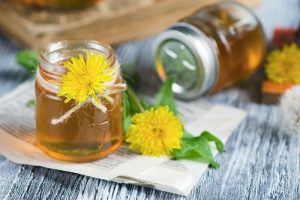 Written by Veronica Turner
Written by Veronica Turner
Why does home care matter in the big picture of elderly health? Consider that each individual’s journey through later years is as unique as their fingerprint, with needs and preferences dictating the course of their healthcare.
Personalized in-home care emerges not just as a service, but as a cornerstone in holistic health strategies for the elderly.
A successful holistic plan integrates more than just medical treatments; it includes nutrition, physical activity, mental health support, and perhaps most importantly for many aging individuals, the comfort of home.
Let’s examine how affordable home care dovetails seamlessly into these elements to enhance overall well-being without demanding excessive resources.
Crafting a Compassionate Framework
Home care not only offers familiarity and comfort—it sets the stage for comprehensive, compassionate health management. Every aspect of an elderly individual’s life is intertwined with their overall well-being.
A flexible home care provider adapts to these intricacies, tailoring services to ensure that the basics of daily living sync harmoniously with more specialized medical needs.
This approach shifts away from reactionary healthcare towards proactive, patient-centered care. By supporting routine tasks and offering companionship, home caregivers are pivotal in preventing the kind of neglect that can exacerbate chronic conditions or lead to hospital readmissions.
It’s not just about delivering medication on time; it’s about crafting a reliable rhythm for seniors’ lives.
And when this framework is in place, we can look beyond immediate needs to see how deeply connected home care is to nutrition, exercise, and cognitive engagement—key pillars of holistic health strategies.
Let’s now delve into creating a plan that honors this interconnectedness while staying grounded in practicality.
Building the Holistic Blueprint
With a compassionate framework laid down, constructing a holistic care plan is akin to building a house; it requires attention to detail and an understanding of how each component supports another.
The inclusion of nutrition, physical activity, and mental health alongside home care creates a multifaceted strategy that addresses the complex needs of elderly patients.
Affordable home care plays an essential role in this blueprint by providing the support needed for other elements of holistic health to flourish. Its integration ensures that every piece works together effectively towards enhancing the patient’s quality of life.
Key elements of an integrated holistic care plan:
- Nutritional Guidance: Tailoring diets to meet unique health requirements and personal tastes, with caregivers aiding in meal preparation.
- Exercise and Mobility: Establishing routines that respect the patient’s physical capabilities while promoting strength and flexibility.
- Cognitive Stimulation: Incorporating activities that engage the mind such as puzzles or conversation to keep cognitive decline at bay.
- Emotional Support: Prioritizing emotional well-being through companionship and empathetic communication, reducing feelings of isolation.
- Regular Medical Oversight: Coordinating with healthcare providers to monitor health trends and adjust care plans proactively.
- Medication Management: Assisting in the accurate administration of prescribed medication, ensuring timely intake and minimizing potential drug interactions.
- Personal Care Assistance: Offering help with daily tasks such as bathing and dressing, upholding dignity while fostering independence.
Ensuring Accessibility and Sustained Care
The mosaic of holistic healthcare has affordability as its grout; it holds the entire structure together. It’s crucial that health strategies for the elderly are financially sustainable over the long term, to ensure continuous care without causing undue stress on families or individuals.
Making holistic health strategies accessible begins with education—on understanding available resources, benefits, and how to navigate care options efficiently.
Transparency from service providers about costs and packages allows families to make informed decisions that align with their budget and care needs.
In many cases, affordable in-home care providers become partners in this endeavor, offering scalable services that can flexibly adjust as a patient’s needs evolve. They serve not just as aides, but as critical liaisons between families, healthcare professionals, and community resources.
This collaboration is key to maintaining both the quality of life for seniors and the cost-effectiveness of their comprehensive care plans.
Navigating the Home Care Partnership
The essence of integrating home care into a holistic health strategy is partnership. It involves a dynamic relationship where communication and collaboration are paramount, ensuring that every aspect of the patient’s care is in sync.
This synergy not only amplifies the efficacy of each health component but also fortifies the patient’s sense of stability and security.
Elements for effective collaboration in holistic health:
- Open Communication Channels: Ensuring that there are established methods for clear, ongoing dialogue among caregivers, family members, and healthcare professionals.
- Shared Goals and Expectations: Aligning all parties on the desired outcomes for health improvements and setting realistic milestones.
- Continuous Education: Providing training opportunities for caregivers to stay abreast of best practices in elderly care and specific health conditions.
- Regular Assessments: Conducting frequent evaluations to measure progress against goals and adapting plans accordingly.
- Community Resources Integration: Leveraging local services such as senior centers or transportation programs to complement in-home care efforts.
Measuring Success and Adjusting Course
Success in integrating home care into holistic health strategies isn’t always measured by numbers on a chart; it’s also seen in the everyday victories that enhance an elderly patient’s quality of life.
Regular assessment is crucial, serving as the compass by which the care plan is steered and adjusted. These assessments go beyond medical vitals to include emotional well-being, social interaction, and overall satisfaction.
By consistently evaluating these factors, caregivers can identify areas for improvement or necessary changes to the care routine. This nuanced approach ensures that the care provided remains as dynamic and individualized as the patients themselves.
Pivotal to this process is adaptability. As circumstances evolve—whether due to changes in health status or personal preferences—a flexible care plan can pivot appropriately.
It’s about creating a living document that breathes with the rhythms of daily life, ensuring that each day holds potential for positive experiences within a stable framework of comprehensive care.
Conclusion:
In the end, integrating home care into holistic health strategies for elderly patients is less about stitching together separate services and more about weaving a tapestry of care. Each thread—nutrition, physical activity, mental health support—is held firmly in place by the anchor of home care.
For seniors and their families, this integrated approach offers a personalized path toward well-being that is both sustainable and dignified.
Author Bio: Veronica Turner is a health and lifestyle writer with over 10 years of experience. She creates compelling content on nutrition, fitness, mental health, and overall wellness.
Please also review AIHCP’s Holistic Nursing Certification program and see if it meets your academic and professional goals. These programs are online and independent study and open to qualified professionals seeking a four year certification.




